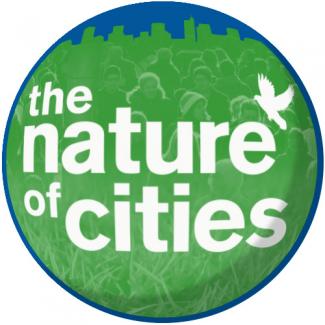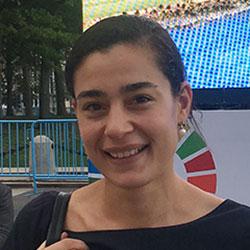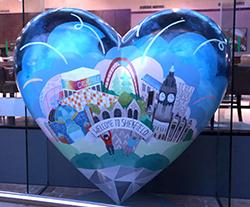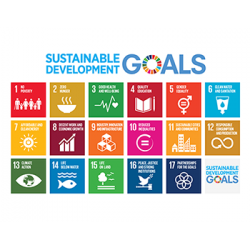The Nature of Cities is an international platform for transdisciplinary dialogue and urban solutions. The nature of cities facilitates the sharing of diverse, transformative ideas about cities as ecosystems of people, nature, and infrastructure.
They are committed to the design and creation of better cities for all: cities that are resilient, sustainable, livable, and just. David Simon, director of Mistra Urban Futures, has been invitied to roundtables at Nature of cities and has recently contributed to a blog. Take part of the blog and read more about the Nature of cities work.
David Simon writes as a guestauthor at the roundtable:"What I mean when I talk about collaboration": What is a specific experience collaborating on a project with someone from a different discipline or “way of knowing”?
"The partnership worked effectively because of key champions, but also because our team was able to generate synergies of interest among the participating partners that benefited all concerned.
This experience represents one example of the transdisciplinary as well as interdisciplinary approach to tackling so-called “wicked” problems around transitions and transformations to urban sustainability that characterise the work of Mistra Urban Futures, which I lead".
Mistra Urban Futures is an international research centre on urban sustainability that experiments with various forms of transdisciplinary co-design/-creation or -production methodologies in formal transdisciplinary institutional partnerships. In this sense, transdisciplinarity refers to academic and various policy and practice stakeholders working together into research partnerships—as distinct from interdisciplinarity, which refers to people from different academic disciplines working together.

As a partner in the Campaign for an Urban Sustainable Development Goal from 2014, I realised the potential value of using the four cities where Mistra Urban Futures at that stage had transdisciplinary research platforms to test the draft targets and indicators for what became Sustainable Development Goal 11 (SDG 11, the urban goal). Despite the great diversity of skills and experience within the Campaign, debate and dialogue could only get us so far and to be able to provide feedback to the UN statistical team on the basis of real-world testing would be a huge advantage. With additional funding, we then undertook an intensive 3-month pilot project in early-mid-2015 to work with the local authorities in our four platforms (Gothenburg (Sweden), Greater Manchester (UK), Cape Town (South Africa), and Kisumu (Kenya))–and we added Bangalore (India), to provide an almost-megacity in Asia for even greater diversity of conditions and operational challenges.
The challenges of setting up and running the experiment were considerable, not least in terms of the short timeframe but also all the well-known differences of priorities, operational protocols and procedures, budgetary constraints and staff availability. The project was designed centrally but operationalised and implemented locally by each of our city platforms and the team in Bangalore at the Indian Institute for Human Settlements. The example here focuses on Cape Town, but each city case study threw up specific challenges.
Finding different paths in Cape Town, new set of targets
The immediate issue in Cape Town was that the formal partnership underpinning the research platform was between the academic host and partner, the African Centre for Cities at the University of Cape Town, and one particular department in the City of Cape Town (i.e. the municipality). For a combination of the above reasons, the head of that municipal department was not well disposed to participation in the project or even the idea of developing a new set of targets and indicators, because South African metropolitan authorities were at that time overwhelmed with performance and compliance demands from central government in the form of overlapping indicator sets.
Participation in the project depended on finding a different path. The leadership of the Cape Town platform used personal connections to discuss the proposal more widely in the municipality. Fortunately, the head of one integrative department saw the point of the exercise and also the value to the City of having a “dry run” of activities on which it would have to report annually from 2016-2030 in any event. She became the crucial institutional “champion”, along with a former municipal employee and at that time a consultant working with the national Treasury (finance ministry) to harmonise reporting indicators for metropolitan authorities.
Not only did the partnership work effectively because of these champions but because our team was able to generate synergies of interest among the participating partners that benefited all concerned, as well as contributing to a successful project that helped refine the final targets and indicators of what became SDG 11. It enhanced the partnership’s existing relations of trust and has led to an extremely fruitful ongoing partnership implementing a longer term follow-up project on how the City is engaging with the SDGs and New Urban Agenda.
Read more on the nature of cities website and several more contributors.
For further details, see the following Open Access papers:
D. Simon, H. Arfvidsson, G. Anand, A. Bazaaz, G. Fenna, K. Foster, G. Jain, S. Hansson, L. Marix Evans, N. Moodley, C. Nyambuga, M. Oloko, D. Chandi Ombara, Z. Patel, B. Perry, N. Primo, A. Revi, B. van Niekerk, A. Wharton and C. Wright (2016) ‘Developing and testing the Urban Sustainable Development Goal’s targets and indicators – a five-city study’, Environment and Urbanization28(1), pp. 49-63 (my contribution 30%), http://dx.doi.org/10.1177/0956247815619865.
Z. Patel, S. Greyling, D. Simon, H. Arfvidsson,N. Moodley, N. Primo and C. Wright, (2017) ‘Local responses to global sustainability agendas: learning from experimenting with the urban Sustainable Development Goal in Cape Town’, Sustainability Science 12(5), pp. 785-797 DOI 10.1007/s11625-017-0500-y.








